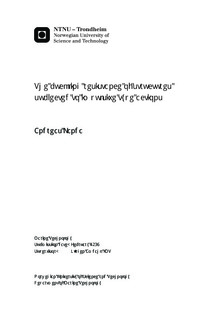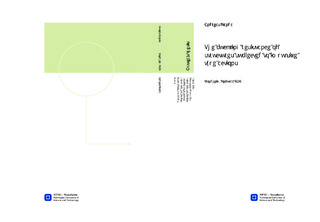| dc.description.abstract | The behavior and resistance of structural components subjected to impulsive type loads is investigated. An increased insight into dynamic buckling is achieved by performing a literature study, together with analyses on beam-columns and plates. The analyses are done in the programs USFOS and ABAQUS. The literature study defines two forms of dynamic buckling; vibration buckling and pulse buckling. The thesis' main focus is dynamic buckling of beam-columns and plates. This can be related to slamming loads on ships or collisions between ships and offshore rigs. To be able to describe dynamic buckling properly, a theoretic foundation is created. The basic equations established by (Lindberg and Florence, 1987) are derived, as well as a mathematical description of dynamic buckling. The derivation show some of the basic features of pulse buckling for an axially loaded bar. Different parameters effect on dynamic buckling loads are also investigated. These parameters are load duration, shape and magnitude of initial imperfections, material choice and reduced slenderness. The dynamic loading factor is also included in the study. It is shown that the dynamic loading factor may drop below unity for loading durations close to the natural period of the component. The parameters effect on the buckling loads is shown to be significant, and is therefore further investigated in the analysis. An axially loaded beam-column is analyzed in USFOS. Steel is the material of choice. The beam-column contains initial geometrical imperfections compatible with the three first buckling modes. By varying the loading rate, the transition from one buckling mode to a higher mode is investigated. The effect of changing the magnitude of imperfections is also considered, as well as the composition of the imperfections. The reduced slenderness of the beam-column is varied, and it is found that the effect of this change on dynamic buckling loads is significant. To investigate the beam-columns behavior in real life, there are performed analyses with using a realistic value for the yield strength. A plate loaded with an edge load is analyzed in ABAQUS. The plate's eigenmodes are found by performing an eigenvalue analysis. The eigenvalues are implemented as initial imperfections. The effect of using different combinations and scaling of the eigenmodes are investigated by considering the change in the dynamic buckling loads. The effect of varying the reduced slenderness is also found, and by varying the loading rate the transition from one buckling mode to a higher mode is investigated. It is found that parameters such as reduced slenderness and scaling of the imperfections have a major influence on the dynamic buckling load. To verify the results from the analysis performed in ABAQUS, analytical results are obtained from (Ekstrom, 1973) and by using MATLAB. | nb_NO |

